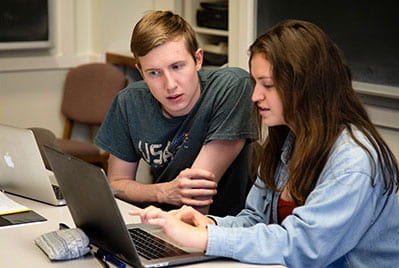by Gaby Bucio, Konstantin Larin, Amy Pass, and Lianbi Ji

Prior to our work in translation, we all had already encountered translations in our day-to-day lives. We did not fully understand the challenges and creativity involved in the process of translation until we were faced with the task ourselves. Professor Sara Brenneis’ new colloquium, “War in Translation”, requires researching and translating primary sources from 20th century conflicts. Before the class began in the winter of 2019, some of us anticipated linguistic immersion in specific historical periods; others worried that they would never find a relevant primary source that had not been translated into English. The colloquium itself began by teaching us about the meaning and importance of translation. Only afterwards did we research our time periods in depth and navigate archives to find our primary sources. Fortunately, we all found sources that had never been translated before. Lastly, the bulk of our time was spent translating, analyzing language, reading secondary sources to understand the historical contexts of our conflicts, and working as a team to peer edit each other’s translations.
Gaby Bucio translated the memoir of Isidro Fabela, a lawyer and activist during the Mexican Revolution, which contains obscure anecdotes from notorious revolutionaries. Amy Pass translated the diary of José Revueltas, a Marxist activist and writer, from his time in the infamous Lecumberri Prison during the Mexican Dirty War. Lianbi Ji translated government and individual narratives on China’s nationwide lay-off in the 1990s. Konstantin Larin translated articles about the duties of socialists written by Nikolai Avksentiev, an exiled Russian socialist, during World War I. Each of us had a distinct translation experience, depending on our historical periods, languages, and primary sources. Nevertheless, we all concluded our experience with greater confidence in our writing and a better understanding of the art of translation. The following articles outline each of our individual experiences, the challenges we faced along the way, and the important lessons that we learned.
Gaby Bucio: Letting Go of Adelitas
Konstantin Larin: Translator’s Limelight
This past summer, we worked on Professor Brenneis’ own project on Spaniards in the Nazi concentration camp of Mauthausen alongside our own translation projects. We analyzed the distinction between what was written in Arriba, a fascist Spanish newspaper, and what other historical references said about the time period. Together, we were able to compile a history of bias presented in Arriba over the course of a two-month period in 1946. Such overarching investigations into historical and cultural contexts are necessary to understand the real meaning and significance of any historical primary source, whether it be the memoir of a paternalistic “revolutionary,” the diary of a real revolutionary, articles by a politician in exile, or narratives by a wide range of victims living under the oppression of the State. In many ways our work with Arriba mirrored the frustrations and joy that we all experienced in working with our own translations. We had successes and failures and discoveries and disappointments. Through it all, the processes of translation gave us unique insights into the personal realities of individuals across times and places and ourselves.
Collaboration also helped us on our own projects. Professor Brenneis writes, “At first blush, it seemed unlikely that we could find common ground among texts from Mexico, China and Russia stretching over the last century. And yet, by working and thinking together, Gaby, Amy, Konstantin, Lianbi and I discovered that the art of translation not only benefits from but requires this kind of connection beyond our physical and intellectual borders.” Throughout the semester and the summer, we relied on each other to improve the coherence and style of our English translations. Translation, generally speaking, is a solitary act. We read our primary sources alone. We interpret them alone. And, ultimately, we translate them alone. However, consistent collaboration helped us to be mindful of the more communal aspect of translation, that is, understanding others’ experiences and presenting a piece to a whole new audience.
Read more about this project on the Amherst website:
“Tossed in Translation” by Katherine Whitmore
